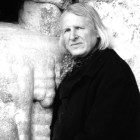The Essl Museum is one of the main architectural works by Austrian architect and holder of the Austrian State Prize Heinz
Tesar. The museum was built in 1999 and presents the completion of Tesar’s unique architectural design vocabulary.
The Essl Museum is home to works of the Essl collection and holds an exhibition space of 3.200 sqm.
In the lofty, bright space of the interior, a counterpart to the cool exterior, the visitor experiences contemporary art as interplay between art, light, space and movement. The spacy green of the surrounding area and the large panorama windows allow various perspectives of the floodplain forest of the Danube with the Essl Museum at the intersection of nature and culture.
The Essl Museum is home to works of the Essl collection and holds an exhibition space of 3.200 sqm.
In the lofty, bright space of the interior, a counterpart to the cool exterior, the visitor experiences contemporary art as interplay between art, light, space and movement. The spacy green of the surrounding area and the large panorama windows allow various perspectives of the floodplain forest of the Danube with the Essl Museum at the intersection of nature and culture.

